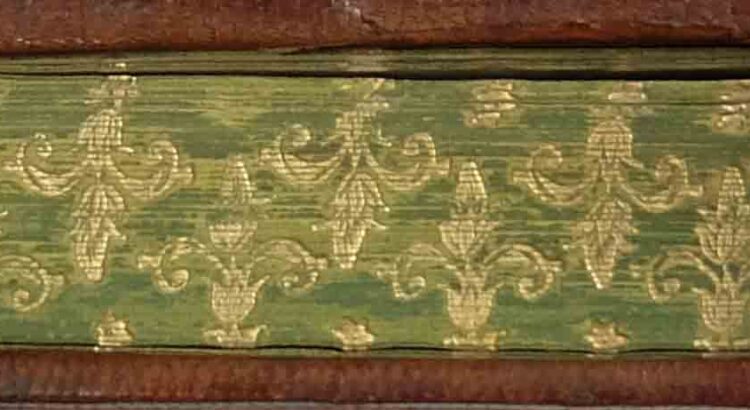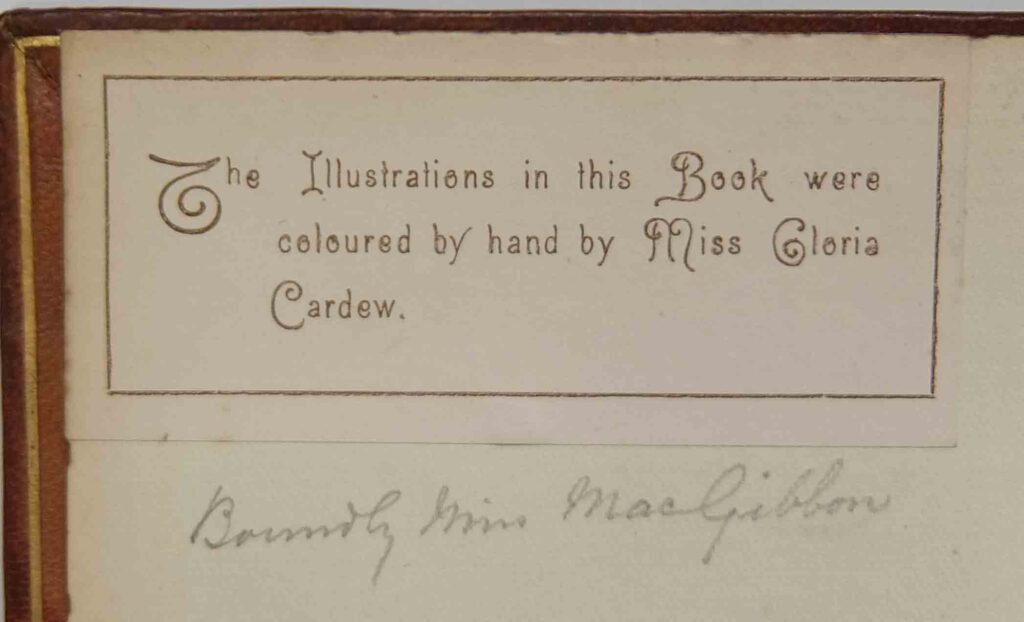Hello, my name is Lydia Ferguson and I am a postgraduate student at the University of Edinburgh studying History of Art, Theory, and Display. For the past three months I have been working as an intern at the National Library of Scotland in the Rare Books Division under the supervision of Rare Books Curator James Mitchell. During this time, I have been privileged to work on a variety of projects involving pre-1801 engravings and 19th century plates featuring images of Scotland. I also have a personal research interest in women’s stories lost to history and so was delighted when given the opportunity to explore the collection of bindings in the National Library of Scotland’s collections associated with the Guild of Women-Binders.
The London bookseller Frank Karslake (1851-1920) founded the Guild following his visit to an exhibition of Victorian book bindings in 1897. In 1899, Karslake set up the Guild as a way for women to learn book binding under a new wing of his Hampstead Bindery. Karslake soon acted as an agent for several women binders, including his own daughter, Constance Karslake. Frank hoped “to establish a system that would both train and employ women binders”. He also spoke highly of the women, stating in his book The Bindings of To-Morrow (1902) that these bindings “were superior to those worked by men”.
In examining the collection of the Guild’s bindings at the National Library of Scotland, I was intrigued by the children’s story, Good Night (London, 1895) by Dolly Radford (1858-1920).
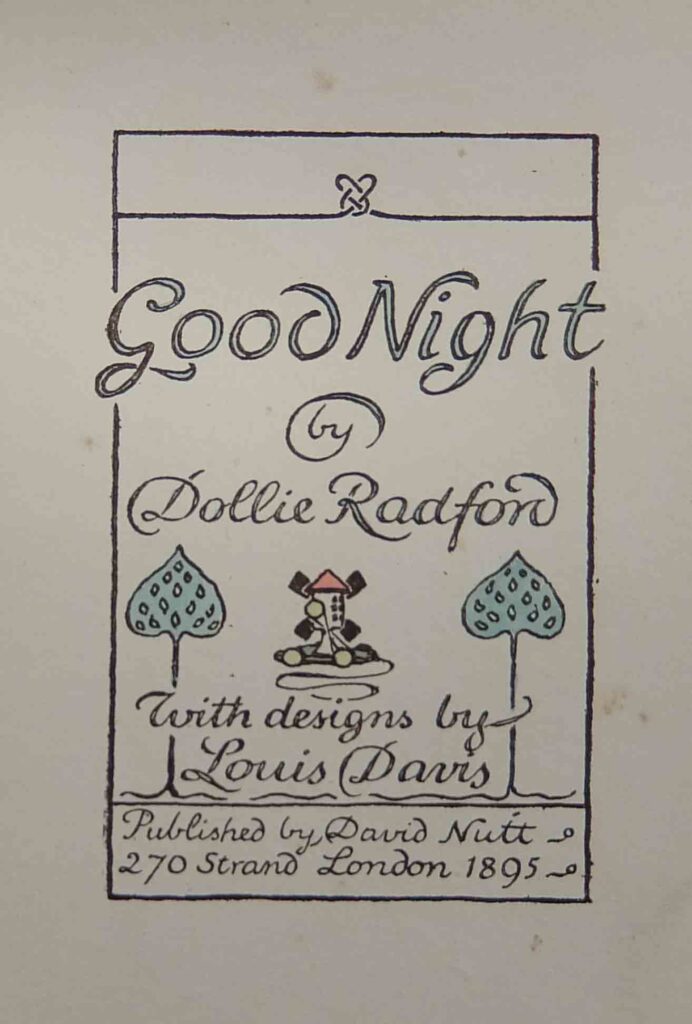
The binding design was by Jessie Rintoul MacGibbon, an Edinburgh-based member of the Guild. It features a simple yet effective gilt design in leather depicting the moon and stars over a Viking-style boat with a lone passenger.
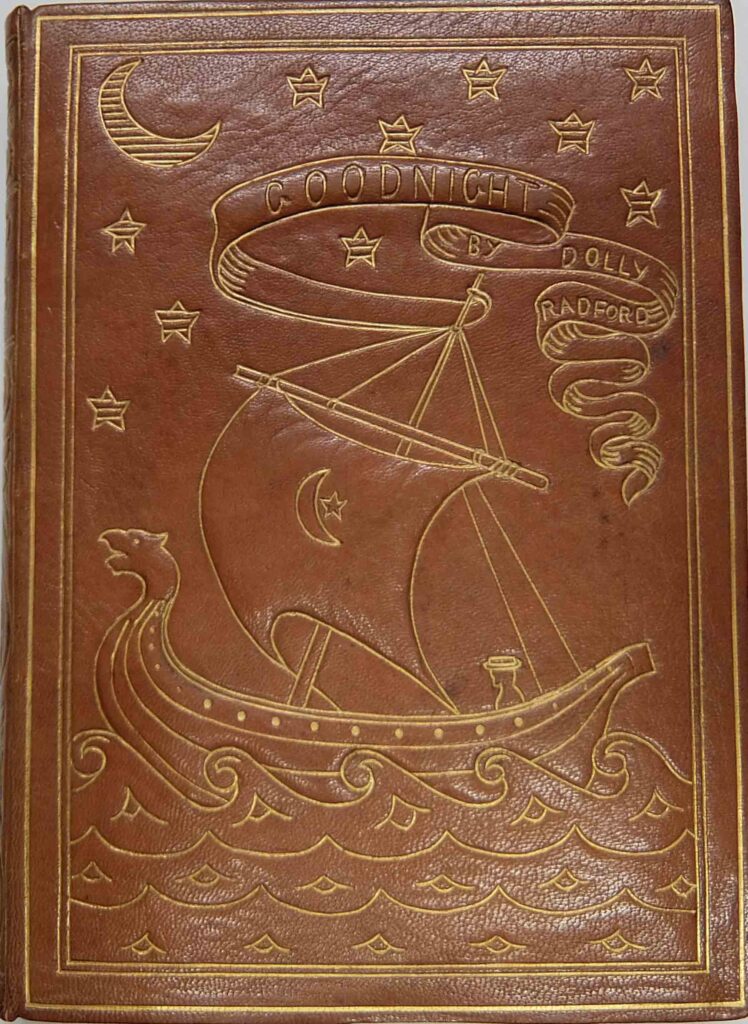
The green fore-edges feature gauffered edges in gilt depicting alternating rows of fleur-de-lis.

The book also has meticulously hand-coloured illustrations that enhance the story’s narrative of a child’s dream.
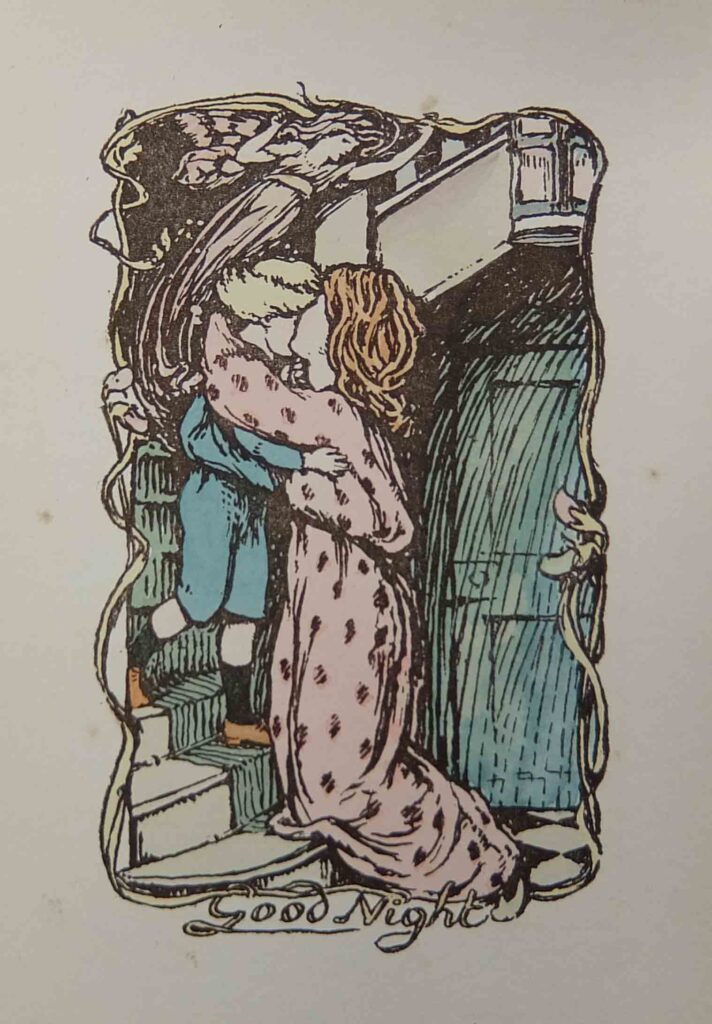
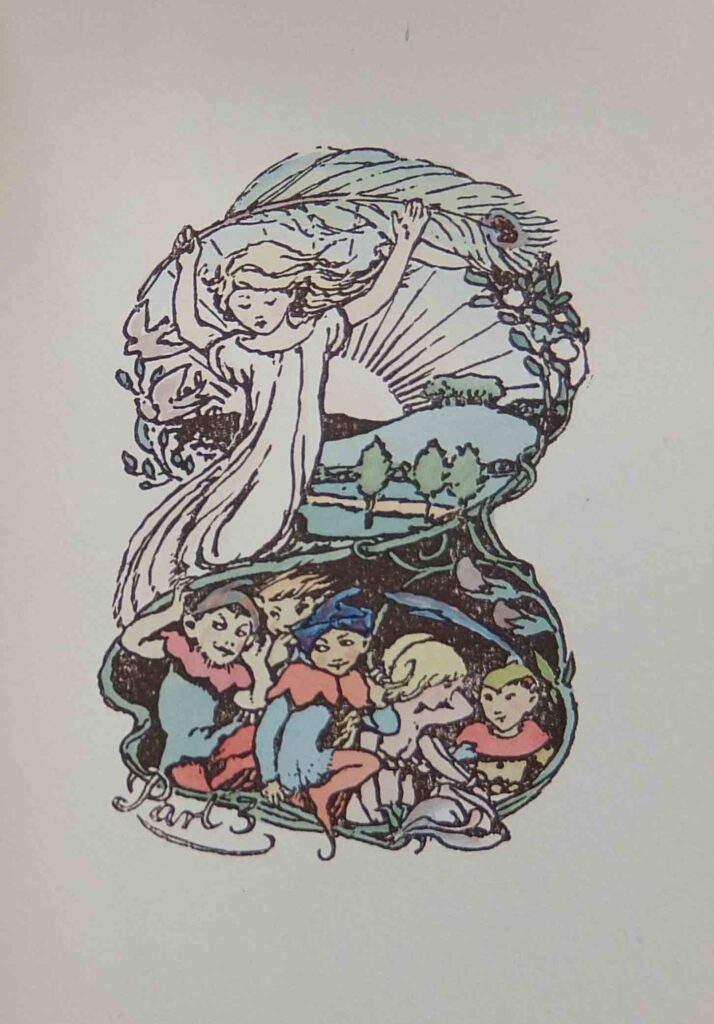
The hand-colouring was done by ‘Gloria Cardew’, an assumed pseudonym.
Through researching this name in newspapers, birth records, and travel documents, I discovered that ‘Gloria’ is likely Constance Karslake. They were the same age, spent the same amount of time living in California in the 1890s, had the same married name, and were both associated with the Guild of Women-Binders. Perhaps Constance wanted to be known for her book bindings and created the persona ‘Gloria’ to distinguish her work as a hand-colourist.
Further Reading:
Radford, Dollie. Good Night: with designs by Louis Davis. (London: David Nutt, 1895) Shelfmark: RB.s.253
Catalogue of bindings by the Guild of Women-Binders and the Hampstead Bindery for which the silver medal was awarded at the Paris Exhibition, 1900. (London: Dryden Press, 1900). Shelfmark: SU.18.1900
Catalogue of bindings by the Guild of Women-Binders and the Hampstead Bindery some of which have been exhibited at the Glasgow Exhibition and elsewhere … which will be sold by auction, by Messrs. Sotheby, Wilkinson & Hodge …on Monday, the 16th day of December, 1901 … (London: Dryden Press, 1901). Shelfmark: SU.18.1901
The bindings of to-morrow: a record of the work of the Guild of Women-Binders and of the Hampstead Bindery. (London: Printed for the Guild of Women-Binders, 1901). Shelfmark: SU.18
